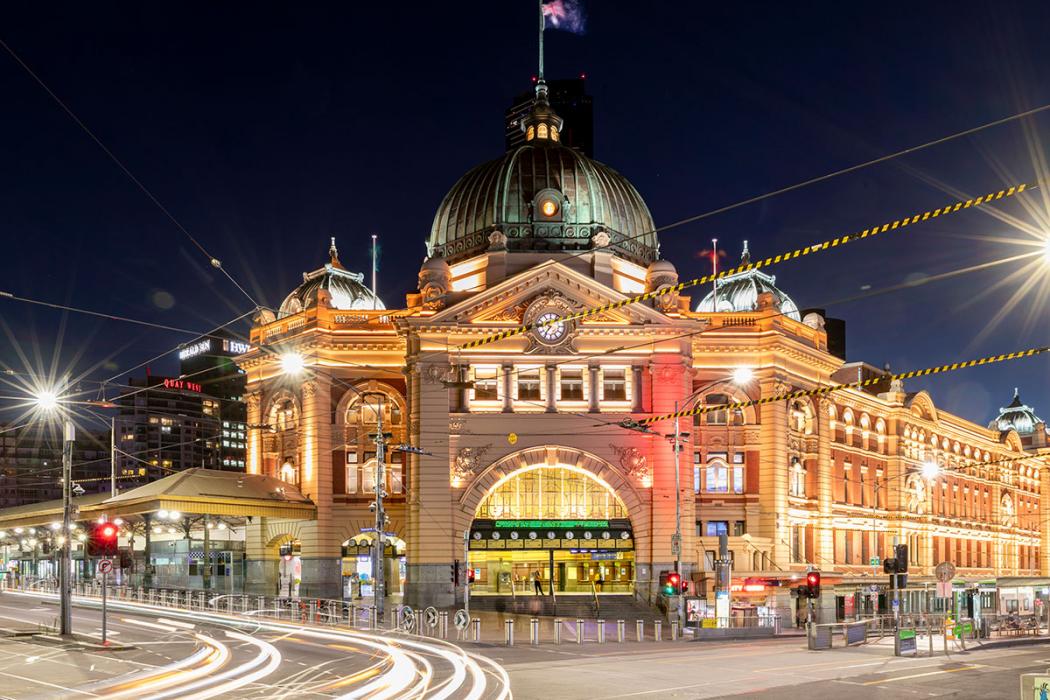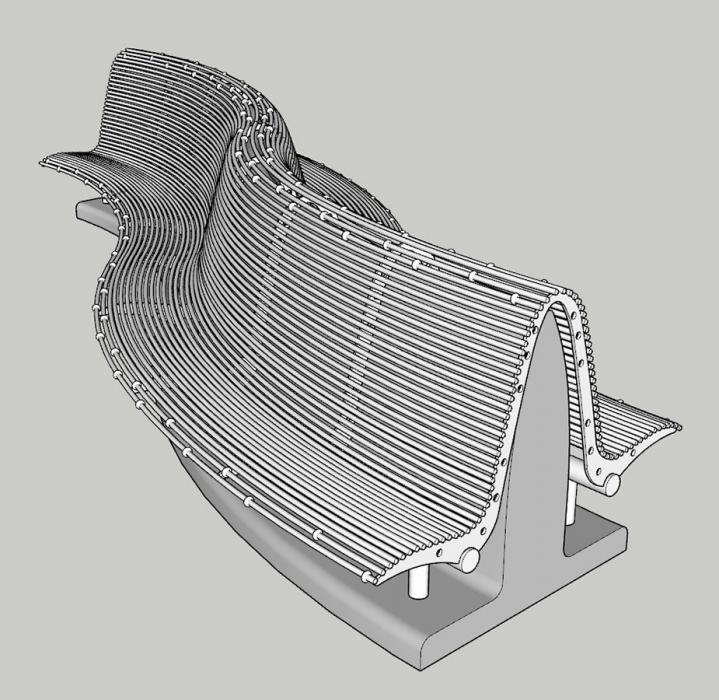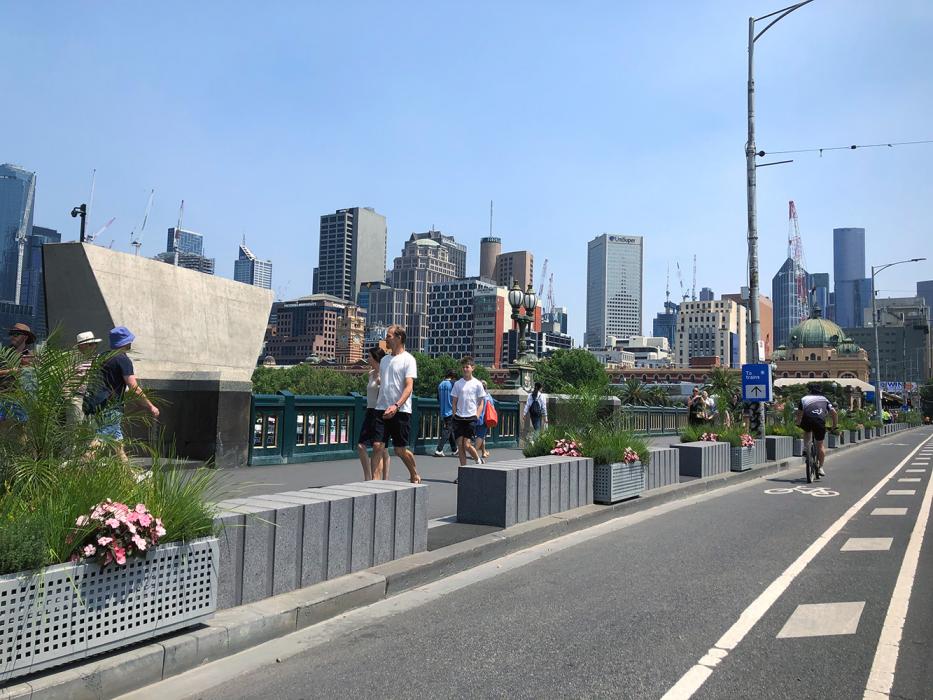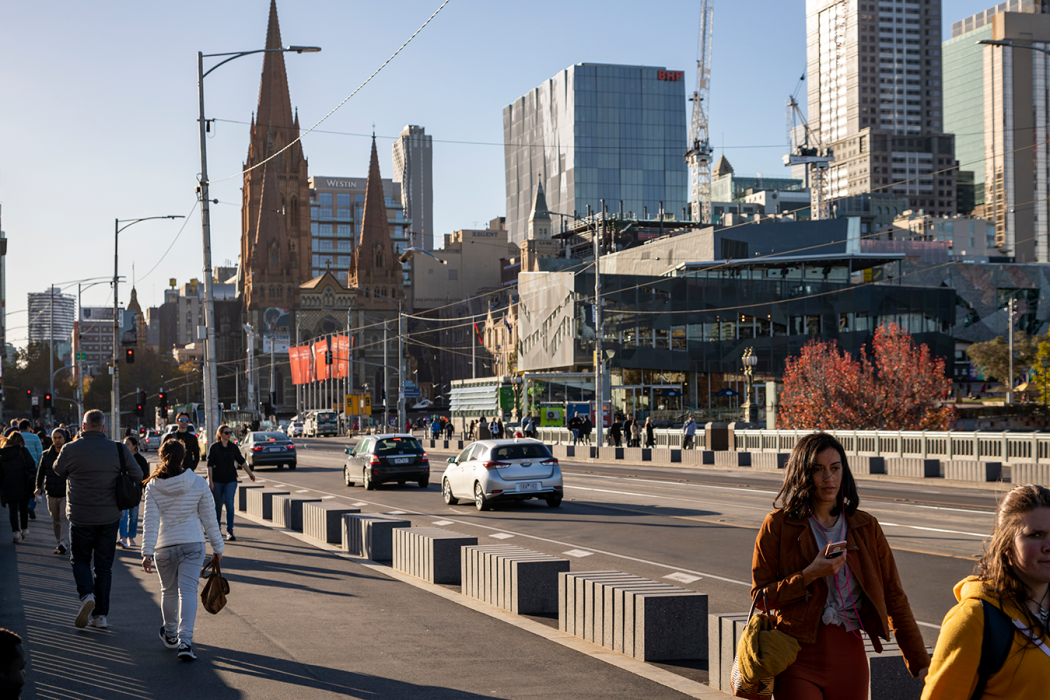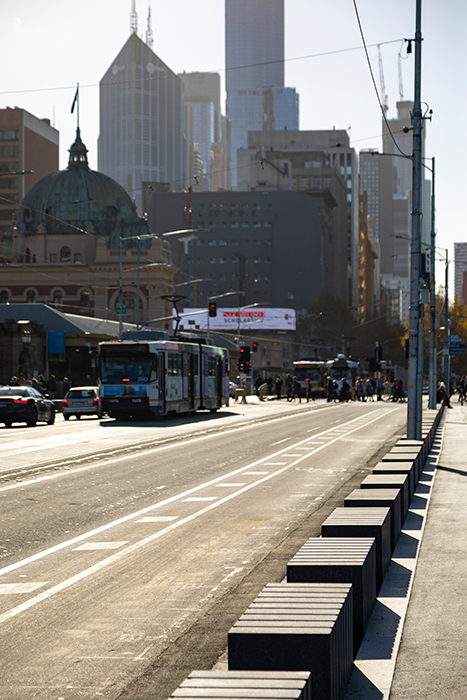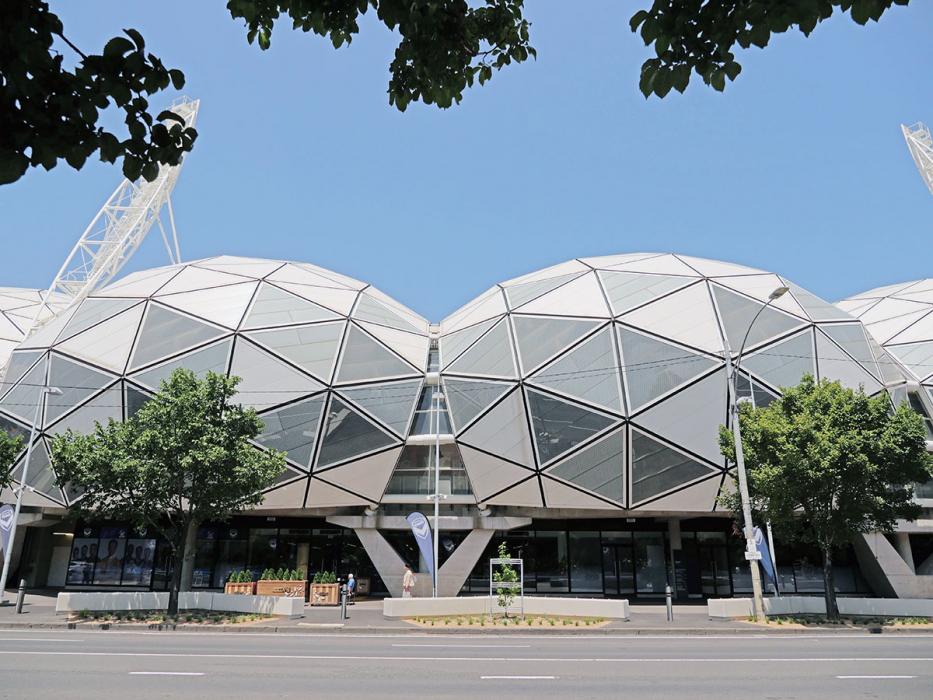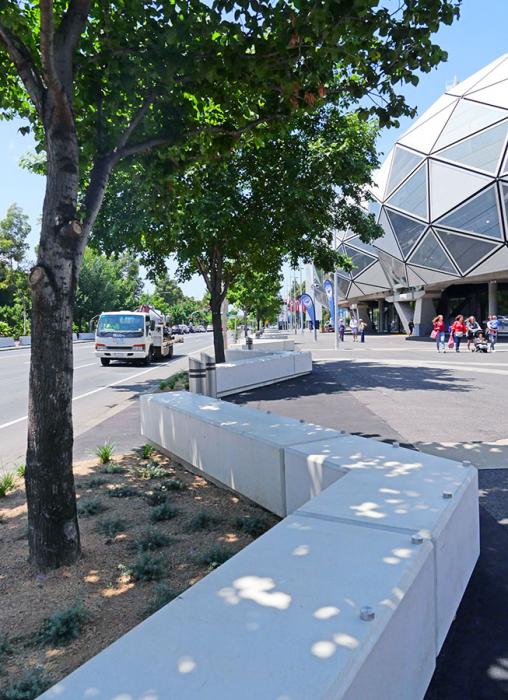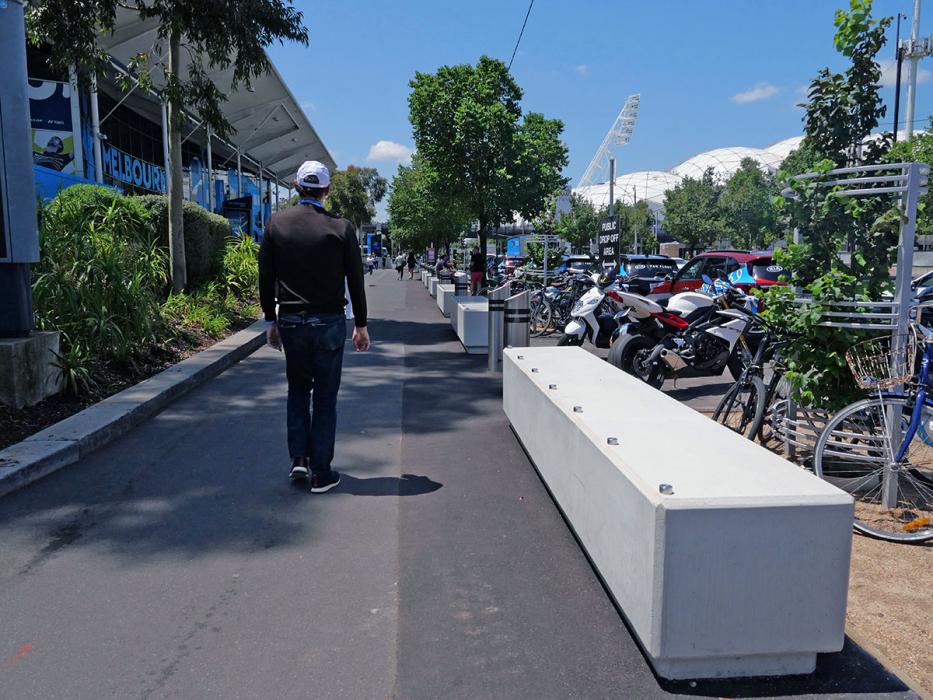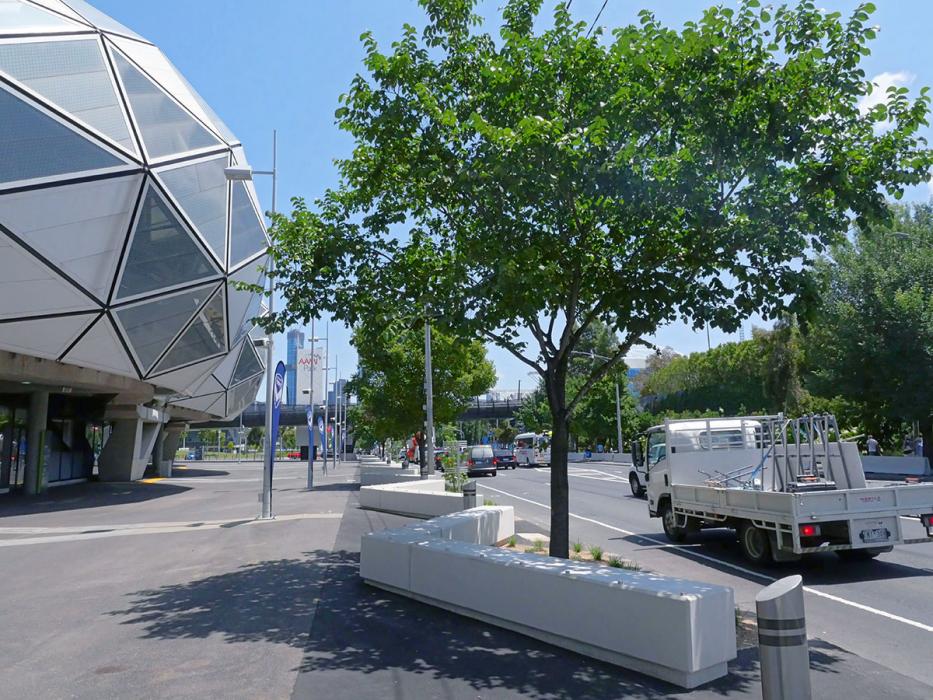Protecting Australian Public Spaces
In 2017 and 2018, three vehicular attacks on the public in Melbourne, Australia, resulted in 47 injuries and nine deaths. The events raised awareness of the need for enhanced security in public spaces.
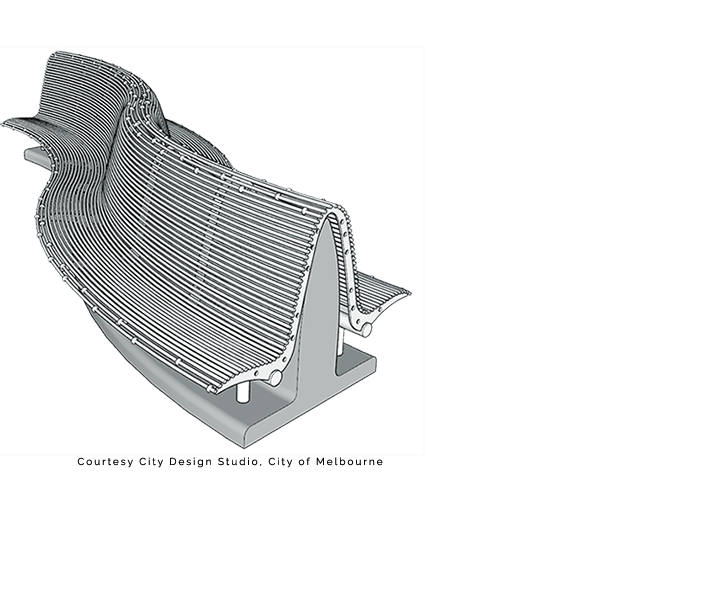
The Challenge
Against a backdrop of attacks in other countries, where a vehicle was used as a weapon, the Australian federal and Victorian state governments sought to enhance security at key locations in Melbourne. Nine sites were selected to benefit from these measures. These included Bourke Street Mall in the central business district, where the vehicular attacks took place, and Flinders Street Railway Station, the country’s busiest rail hub, serving more than 100,000 passengers per day. In both instances, our design had to achieve rigorous performance criteria and honour the historic legacy and design intent of the protected areas.
Here's How
Pedestrian Benches for Hostile Vehicle Mitigation (HVM)
How can you protect an area without violating its design sense? Working closely with the Melbourne protective security enhancement project team, we developed a number of sculptural designs for street furniture that could discreetly blend into the urban streetscape – making it difficult to distinguish HVM from non-HVM measures. A durable concrete barrier was shaped to fit between custom-made stainless-steel benches. This approach minimises the visual impact of the barrier on the streetscape.
Protection When Load Capacity Is Small
Protective barriers are often anchored in civil structures, and their weight is not usually a matter of much design concern. But protecting the historic Flinders Street Railway Station, opened in 1909, was another matter. The bollards had to go onto sloping slabs, which are suspended over train tunnels. So our design had to not exceed the slab load capacity while minimising load transfer into the slab structure should the bollards be struck by a vehicle. To address this need, we developed novel means of spreading the dynamic loads.
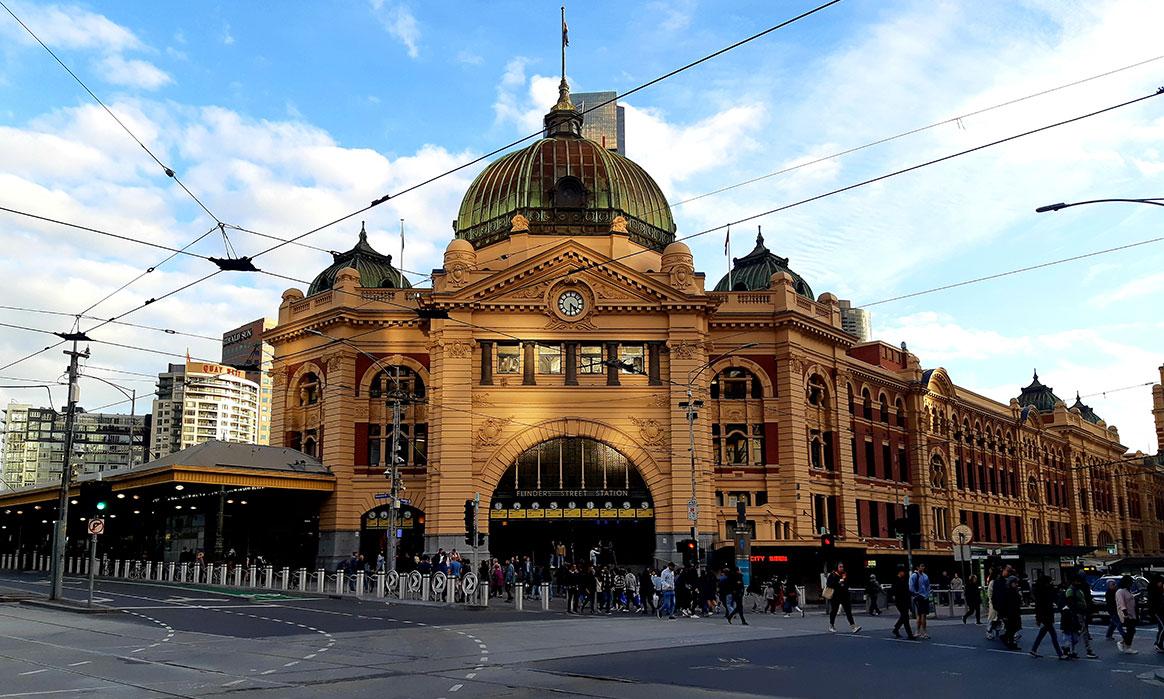
Results
Our engineered solution eliminated the need to strengthen the slab structure, achieving a significant cost saving for the client. We also sidestepped the cost and inconvenience of rerouting roads. By working closely with the project team, including the architect, heritage consultants, and City of Melbourne traffic and town planners, we developed measures that are sympathetic to the architectural legacy of one of Australia’s most recognisable structures.


